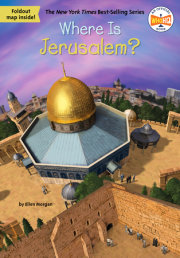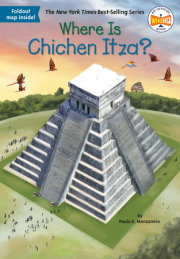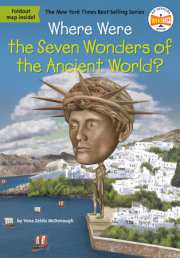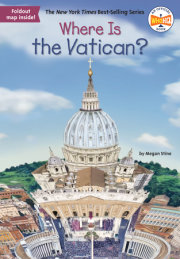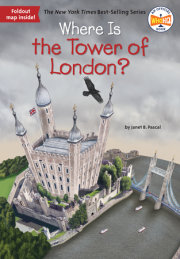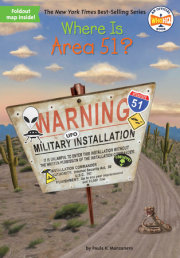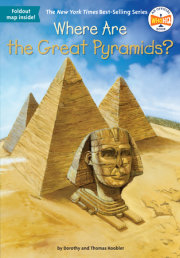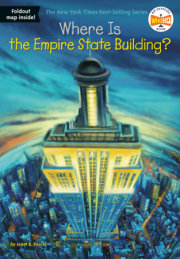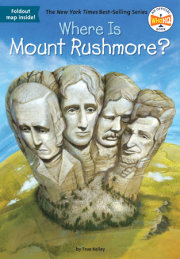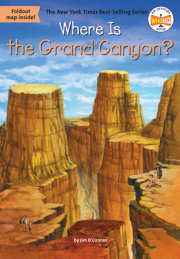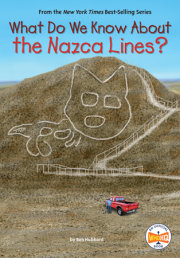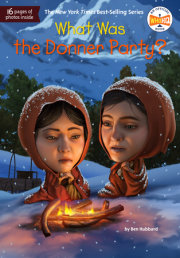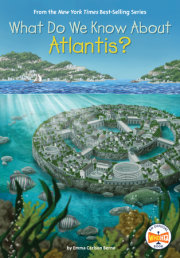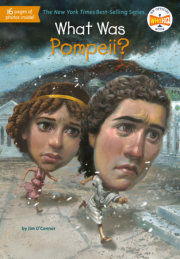


Where Is the Parthenon?
Imagine going back in time 2,500 years to the city of Athens in ancient Greece. It is just about sunrise. You and your parents leave your small mud-brick house and join a large parade of people climbing up a steep hill that rises from the center of the city. Men and women—as well as you and the other young children—are wearing capes over loose, white tunics called chitons (say: ky-tuns). Wearing light clothing helps everyone stay cool in the heat of the sun.
Where is everyone going?
They are heading to a temple that stands on top of the hill. It is made of white marble with a ring of forty columns going around all four sides. It is called the Parthenon (say: PAR-thuh-nahn). Everyone has come here to worship the goddess Athena. The Parthenon is the goddess’s special temple.
Your family follows the parade to the front of the Parthenon. The temple is decorated with brightly painted sculptures made by the most famous artists. The outside of the temple is grand and beautiful. Still, it does not compare with what you will see inside.
You and your family pass through the columns and enter a dark room. You gaze up. Towering above you is a statue of mighty Athena. The “skin” on her face is made of ivory, and her robes are covered in sheets of real gold—more than two thousand pounds of it. The goddess of war is dressed for battle. She wears a helmet, and armor over her chest. With her shield and spear, she is ready to fight against the enemies of Athens. She is a giant. She is almost forty feet tall! What harm can possibly come to your city when mighty Athena is protecting it?
Now jump ahead to modern times. You are in Athens again, on the same sunny hilltop, standing among a crowd of people snapping photos in front of the same temple.
What do you see now?
Actually, it is easier to list all the things you don’t see. The paint on the temple is gone. The roof is gone. So are many of the columns and most of the sculptures on the outside of the temple. As for the giant statue of Athena, there is no trace of it or the room in which the statue stood.
For hundreds of years the Parthenon has been in ruins. Still, it remains one of the most famous places in the world. As famous as the Great Pyramids of Egypt and the Great Wall of China.
In the case of the Parthenon, it is not size that makes it so special. It is because of its beauty. Each year, throngs of tourists climb up the hill and, under the blazing Greek sun, walk around the remains of the temple. Even as a ruin, it is unforgettable.
So what happened to the Parthenon? Why was this world-famous landmark almost destroyed? And who was to blame?
Where Is the Parthenon?
Imagine going back in time 2,500 years to the city of Athens in ancient Greece. It is just about sunrise. You and your parents leave your small mud-brick house and join a large parade of people climbing up a steep hill that rises from the center of the city. Men and women—as well as you and the other young children—are wearing capes over loose, white tunics called chitons (say: ky-tuns). Wearing light clothing helps everyone stay cool in the heat of the sun.
Where is everyone going?
They are heading to a temple that stands on top of the hill. It is made of white marble with a ring of forty columns going around all four sides. It is called the Parthenon (say: PAR-thuh-nahn). Everyone has come here to worship the goddess Athena. The Parthenon is the goddess’s special temple.
Your family follows the parade to the front of the Parthenon. The temple is decorated with brightly painted sculptures made by the most famous artists. The outside of the temple is grand and beautiful. Still, it does not compare with what you will see inside.
You and your family pass through the columns and enter a dark room. You gaze up. Towering above you is a statue of mighty Athena. The “skin” on her face is made of ivory, and her robes are covered in sheets of real gold—more than two thousand pounds of it. The goddess of war is dressed for battle. She wears a helmet, and armor over her chest. With her shield and spear, she is ready to fight against the enemies of Athens. She is a giant. She is almost forty feet tall! What harm can possibly come to your city when mighty Athena is protecting it?
Now jump ahead to modern times. You are in Athens again, on the same sunny hilltop, standing among a crowd of people snapping photos in front of the same temple.
What do you see now?
Actually, it is easier to list all the things you don’t see. The paint on the temple is gone. The roof is gone. So are many of the columns and most of the sculptures on the outside of the temple. As for the giant statue of Athena, there is no trace of it or the room in which the statue stood.
For hundreds of years the Parthenon has been in ruins. Still, it remains one of the most famous places in the world. As famous as the Great Pyramids of Egypt and the Great Wall of China.
In the case of the Parthenon, it is not size that makes it so special. It is because of its beauty. Each year, throngs of tourists climb up the hill and, under the blazing Greek sun, walk around the remains of the temple. Even as a ruin, it is unforgettable.
So what happened to the Parthenon? Why was this world-famous landmark almost destroyed? And who was to blame?
© 2024 Penguin Random House
/



